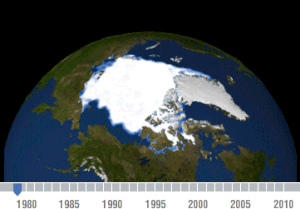Scientists are reporting a bounty of new worlds that may be capable of sustaining life, with the discovery of three exoplanets slightly larger than Earth orbiting within their stars’ habitable zone.
These findings come from NASA’s Kepler spacecraft, a dedicated planet-hunting mission currently wrapping up four productive years in which it has spotted more than 100 planets outside our solar system. The telescope stares at about 150,000 stars simultaneously, watching for a tiny dip in their glow, which could indicate that a planet has passed in front and blocked their light. Though the majority of Kepler’s discoveries are Jupiter-size worlds, the mission has lately been homing in on planets the size and temperature of our own, suggesting they may be good places to find life.
Two of the newly discovered potentially habitable exoplanets orbit the same star, Kepler-62, which is located about 1,200 light-years away. The system resembles our own, with five planets total, though the other three worlds are all too close to the star to contain life as we know it. The two farthest planets, Kepler-62e and Kepler-62f, have 1.6 and 1.4 times the radius of Earth and go around their parent start every 122 and 267 days, respectively.
Because their parent star is only about two-thirds the size of our sun, the estimated surface temperatures of the two worlds is -3 degrees and -65 degrees Celsius. While that sounds very chilly, the calculation doesn’t take into account a potential atmosphere, which would act like a warm blanket, heating the planets up and possibly producing temperatures where liquid water could exist.
There is a great deal of uncertainty with the new worlds and scientists are careful about drawing any conclusions. The Kepler team members don’t know if the planets ”have a rocky composition, an atmosphere, or water,” they write in a paper available Apr. 18 in Science. Unless those properties can be found out, they “cannot determine whether the exoplanets are in fact habitable.”
The other new world, reported today in The Astrophysical Journal, is called Kepler-69c. It takes 242 days to go around a star named Kepler-69 and has a radius about 1.7 times that of our own planet. Its surface temperature is estimated to be a balmy 27 degrees Celsius, basically beach-going weather. Given its size, it’s unknown exactly how Earth-like conditions on its surface might be.















